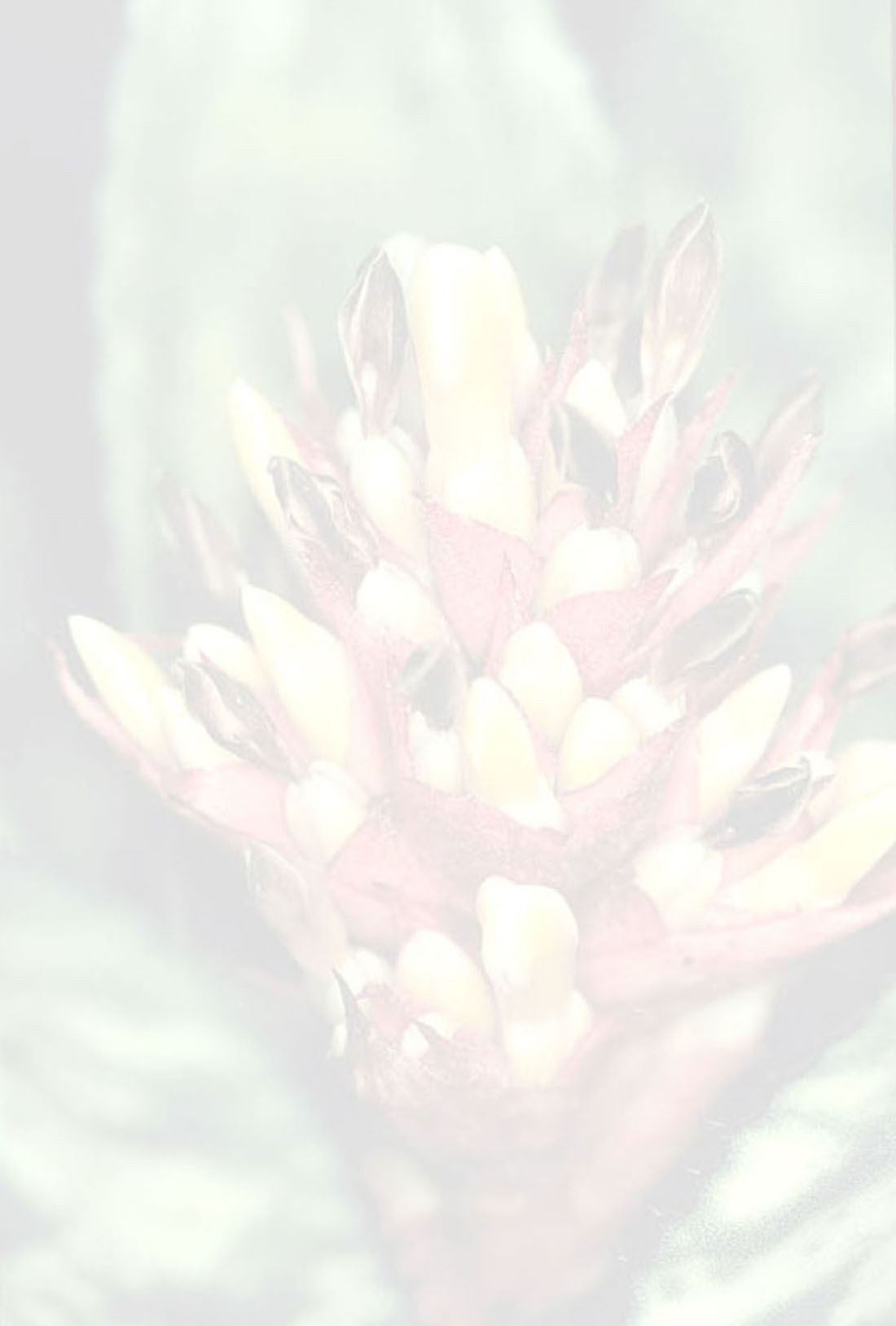Aechmea disjuncta (L B Smith) Leme & J A Siqueira
Literature references:
*move your mouse pointer over the page numbers to see comment
Comments:
- DISCUSSION
The species of the "Aechmea fosteriana complex" have plants that reproduce vegetatively by means of long, stout stolons. The leaves are coriaceous, forming rosettes that tend toward tubular. The flowers are relatively small (15-30 mm long), with asymmetrical sepals, usually oblong or nearly so, apex muticous to minutely mucronulate (mucro to 1 mm long). The petals are narrowly subspatulate, with an emarginate, obtuse-cucullate apex, forming a tubular corolla. In general, these are the characteristics that suggest including H. disjuncta in the genus Aechmea.
Moreover, the pollen grains of A. disjuncta are biporate, ellipsoid to broadly ellipsoid, and the apertures consist of large pores, equal in cross-section to the smallest pollen grain diameter, a hetero-reticulate exine with polygonal to slightly rounded lumina that are smaller next to the apertures, and moderately thickened muri. They have the same structural and morphological pattern as the pollen grains of A. correia-araujoi E. Pereira & Moutinho, A, fosteriana L. B. Sm., A. orlandiana ssp. belloi E. Pereira & Leme, A. bambusoides L. B. Sm. & Reitz, and Quesnelia edmundoi var. rubrobracteata E. Pereira (E. Leme, pers. obs.), as well as of Q. edmundoi L B Sm. var. edmundoi and Q. edmundoi var. intermedia E. Pereira & Leme (Vieira, 1999). These taxa, plus A. fosteriana ssp. rupicola Leme, A. gurkeniana E. Pereira & Moutinho, A. grazielae Martinelli & Leme, A. milsteiniana L. B. Sm. & Read and A. orlandiana L. B. Sm., form a natural complex (s. lato) of species, based not only on palynology, but also on biogeography, habit and overall morphology.
According to data presented by Halbritter & Till (1998) for Canistrum subgen. Cucullatanthus Leme (C. auratum Leme, C. fosterianum L. B. Sm., C. montanum Leme, C. seidelianum W Weber, C. triangulare L. B. Sm. & Reitz), this subgenus is also very similar in terms of palynology to the "Aechmea fosteriana Complex". This similarity extends to phytogeography, morphology and habit. The only difference between the two groups is related to inflorescence structure; in Canistrum, it is densely corymbose, involucrate and ornate with large involucral bracts (upper scape) and primary bracts forming a chalice (Leme, 1997). The afore-mentioned species of Aechmea, Quesnelia and Canistrum subgen. Cucullatanthus are candidates for combination into a single natural complex (s. lato), based on new data and a reduced emphasis on inflorescence structure. This task, however, goes beyond the scope of this book.
Aechmea disjuncta varies to a certain extent in leaf rosette shape. It may be crateriform with wider leaves, or ellipsoid, especially at the base, with narrower leaves. In some plants the leaves may have dark cross bands (e. g., Leme 6044), but they do not have the intense color pattern of A. atrovittata. When sterile, this species is easily confused with A. fosteriana.
Aechmea disjuncta is endemic to low-montane Atlantic forest in Bahia. It forms large clumps as an epiphyte in the canopy, or more rarely it is rupicolous, especially at higher elevations. The species is relatively common within its distribution, and is even found on trees growing alone in pastures and near dwellings. p. Frag Atl NE Brazil

